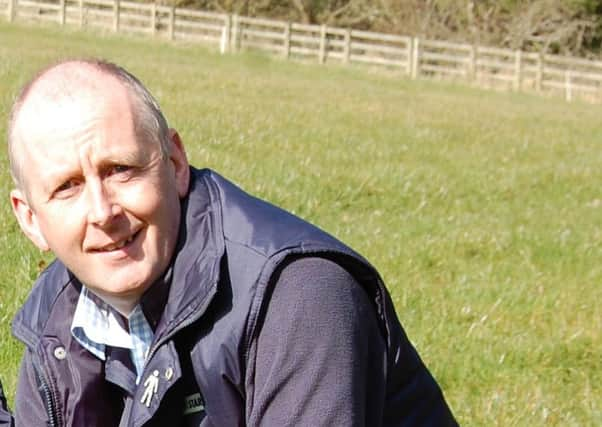Excellent turnout for grassland meetings


In a series of recent meetings across Northern Ireland Trouw Nutrition Staff in conjunction with CAFRE Dairy Technologists set out how dairy farmers might start to redress this issue and make more efficient use of fresh grass and silage at times when lower milk prices are challenging farm incomes.
At these meeting, Martin Mulholland, Alastair Boyle and Stephen Gilkinson emphasised that while many farmers have lost confidence in grass, all farms have some cows that could benefit from grass in their diet and all farms have some fields that could be grazed or zero grazed.
Advertisement
Hide AdAdvertisement
Hide AdThe target for the Greenmount Future herd is to take 4000 litres from a combination of high quality silage and well managed grazing. Cows which are in calf, are at least 100 days in milk and have dropped below 30 litres daily production are candidates for grazing and will show the greatest economic benefit.
Stephen Kelly, from Trouw Nutrition, encouraged farmers to re-evaluate their situation. Set out the farm map, identify fields which are suitable for grazing and if cow numbers have changed over the past few years then reset paddock sizes to suit numbers or only graze numbers which suit paddock sizes. Stephen also emphasised the need to re-examine infrastructal issues such as walkways, water troughs, and labour availability before deciding if and how many to graze.
If grazing is not an option on your farm Stephen went on to examine the pros and cons of Zero Grazing. Whether with the purpose designed machine or a redundant double chop harvestor it is critical that the potential of the cow and that of the grass is calculated and are balanced with suitable levels of silage and concentrate. For higher yielding cows Zero grazed grass should be fed separately during the day and balanced with TMR during the night to ensure energy requirements are met.
Jim Uprichard, also of Trouw Nutrition, emphasised the need for a gradual transition of cows to grass to ensure rumen health which in turn will help maximise Dry Matter Intake, optimise milk from grass and reduce the potential for a drop in Butterfat which has been a feature of recent Springs.
Advertisement
Hide AdAdvertisement
Hide AdMr Uprichard described the need to balance grass with concentrates formulated to meet the needs of the cow. It is vitally important to reduce the crude protein content when grass proteins in spring can be well over 20%, to avoid excess urea levels in the blood which can cause early embryo death and a reduction in milk production. Jim advised speaking with feed suppliers to ensure the correct compound to meet the needs of your cows.
The amount of compound required will depend on grass Dry Matter content and Digestibility. DMI falls by 0.33 kg DM for every 1% drop in grass Dry Matter and by 0.75 kgs for every 1.25% reduction in D value, hence a 3% drop in grass dry matter due to a short spell of wet weather and a 5% fall in D value when paddocks are not grazed out properly, could result in a 4kg drop in DMI resulting in eight litres less milk or a major loss of milk protein and body condition. There are various Grazing Apps available to help farmers with these measurements.
For further information or to receive an ‘Optimising Grass’ information pack please contact Trouw Nutrition Tel: 028 9074 8233